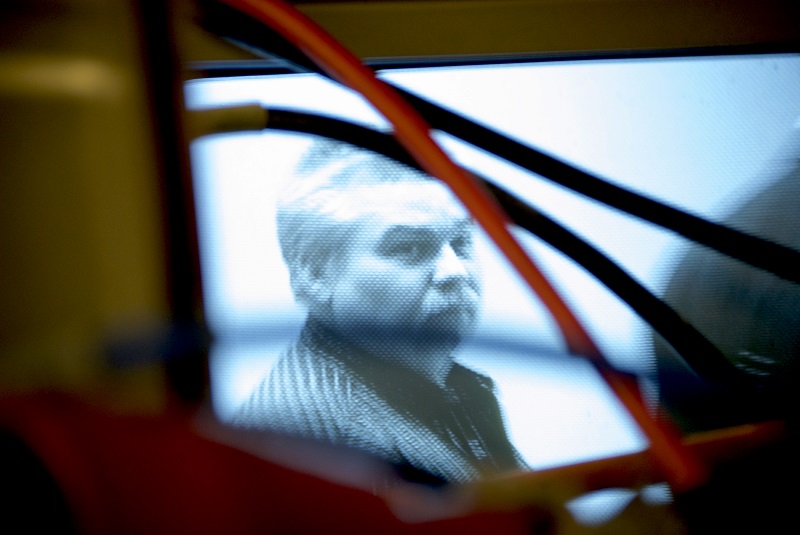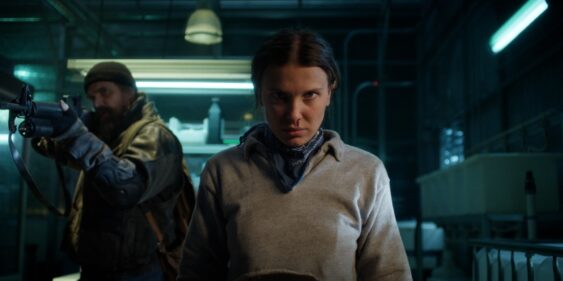When I heard that Netflix was releasing a true crime
documentary series, I was concerned it was merely a quickie attempt at cashing
in on the success of “The Jinx” and “Serial.” It’s not meant as an insult, but Netflix
is very good at copying. They often look at what other networks are doing and
then try to find an audience need not being met by their original programming to be filled. With our national obsession with real-life mysteries
from “48 Hours” to entire cable networks devoted to them, it was probably a
matter of time before a show like “Making a Murderer” popped up on the #1
streaming service (it premieres Friday, December 18th). The good
news is that this no mere place-filler. It is riveting, complex programming
that doesn’t recall disposable television like “Dateline NBC” as much as it
does projects like “Paradise Lost” and “The Staircase.” For ten years, the directors
of “Making a Murderer” watched a fascinating case unfold before them and they
have assembled it in such a detailed way that you feel like you’re there —in the
courtroom, in the living rooms of the victims, in the legal offices. It is so
determinedly not flashy that it may
be too dry for some viewers—it’s ten hours of one case, in the end—but “Making
a Murderer” illuminates so many issues with violations of authority, failures
in our legal system and, ultimately, what could be genuine evil, that it should
be required viewing for anyone considering entering any aspect of the legal
profession.

Steven Avery was not what you would call a “good guy.” The
Wisconsin resident was committing burglaries when he was a teenager and admitted
to throwing his family cat in a fire. A cousin started telling stories around
town that Avery was such an awful dude that he would masturbate on his front
lawn. Avery didn’t like that story, and so chased down the cousin in his car,
pulling a gun on her. It was not the right enemy to make, as Avery’s cousin had
loved ones in the local police force, who, at least according to the stunning
degree of evidence brought forth by “Making a Murderer,” set about framing Mr.
Avery. When a local woman was raped and nearly killed, they pinned the crime on
Avery, sending him to jail for 18 years, until DNA evidence released him. While
he was in jail, the real criminal, whom the local cops even suspected in the
crime they were charging Avery with, continued to rape and assault. The number
of morally unconscionable decisions made by law enforcement—including fabricating
the “police sketch” from Avery’s mug shot—is breathtaking. That men and women
who have gone into a profession designed to protect can be so callously evil
always shocks me.
And yet just when you think that “Making a Murderer” is yet
another brick in the foundation of the story about police corruption, the
narrative spins in a stunning direction. While Avery was building a
multi-million dollar lawsuit to find some reparation for the nearly two decades
he was falsely imprisoned, a woman goes missing. The last person she’s known to
have spoken to? Steven Avery. Is it possible that he’s been framed again? Could
the institutions facing embarrassment and financial burden from a judgment have
pinned another crime on an innocent man? Or did Avery really do this one? Even
the title is elusive. Did the system make Steven Avery into a murderer or just
plant evidence to “make” it seem that way?
To say that “Making a Murderer” is detailed would be an
understatement. We get lengthy depositions, see tons of documents, and hear
from most of the key players involved. Writer/directors Moira Demos and Laura
Ricciardi were front and center as most of this bizarre tale played out in
front of them after Avery’s release. The first hour is pretty standard in that it
recaps what happened in the first case, before the directors got on the ground,
but subsequent hours unfold piece by piece. We get jailhouse phone calls, see
TV footage of a family searching for a missing loved one, and even see the cops
during an 8-day search of the Avery property. And loyalty keeps shifting. Avery
is not an easy man to trust, and it seems beyond comprehension that he would be
framed twice. But is it? When another man comes forward to pin the new crime
directly on Avery, “Making a Murderer” gets even more complex. There are no
easy answers in “Making a Murderer.” There shades of guilt, from the authority
used for evil in the ‘80s to the perpetrators of violence in both cases. Most
of all, this excellent series captures a system that so easily loses sight of
its most important duty: finding justice for its victims.












